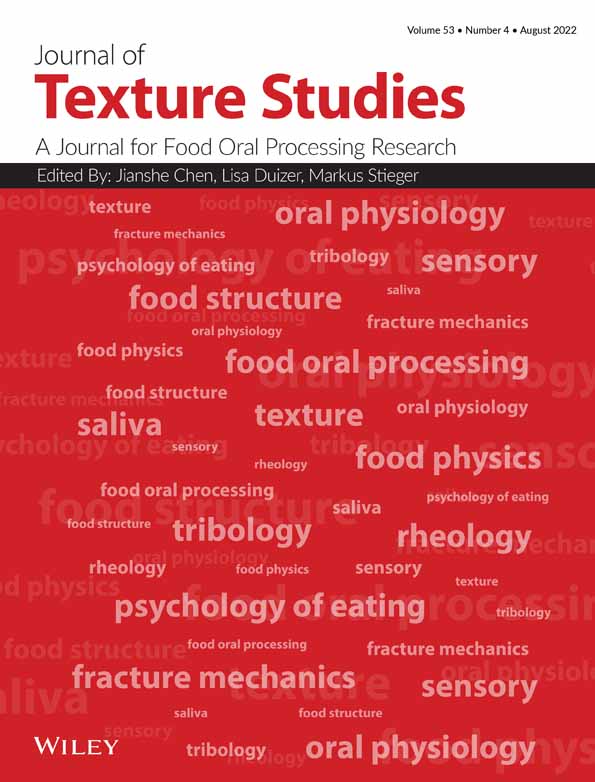Development and validation of a chewing robot for mimicking human food oral processing and producing food bolus
This article was published on AA publication on: 26 May 2022.
Funding information: Jiangsu Key Laboratory of Advanced Food Manufacturing Equipment and Technology, Grant/Award Number: FMZ201901; National Natural Science Foundation of China, Grant/Award Number: 51775244
Abstract
More and more studies have being done on the deformation process of food and the formation of food bolus during chewing. However, it is hard to observe the food oral processing (FOP) of subjects and obtain related data directly. A bionic chewing robot based on a six-axis parallel mechanism was proposed in this paper. The robot can not only simulate the movement of the lower jaw but also set a variety of oral processing parameters, such as the number and shape of teeth, oral temperature, saliva volume, chewing cycles, speed and force. Meanwhile, dental wax and peanuts were taken as food samples, and the chewing experiments were carried out by the bionic chewing robot and subjects, respectively. The results showed that the bionic chewing robot could be used to mimic human FOP and produce food bolus. Especially when the chewing cycles met the requirement of swallowing, the median particle size of the peanut bolus and the mixing effect index of the dental wax bolus in the two different experiments were highly consistent. In addition, the robot was proved to have the same food texture detection function as the texture analyzer.
Open Research
DATA AVAILABILITY STATEMENT
The authors confirm that the data supporting the findings of this study are available within the article.




